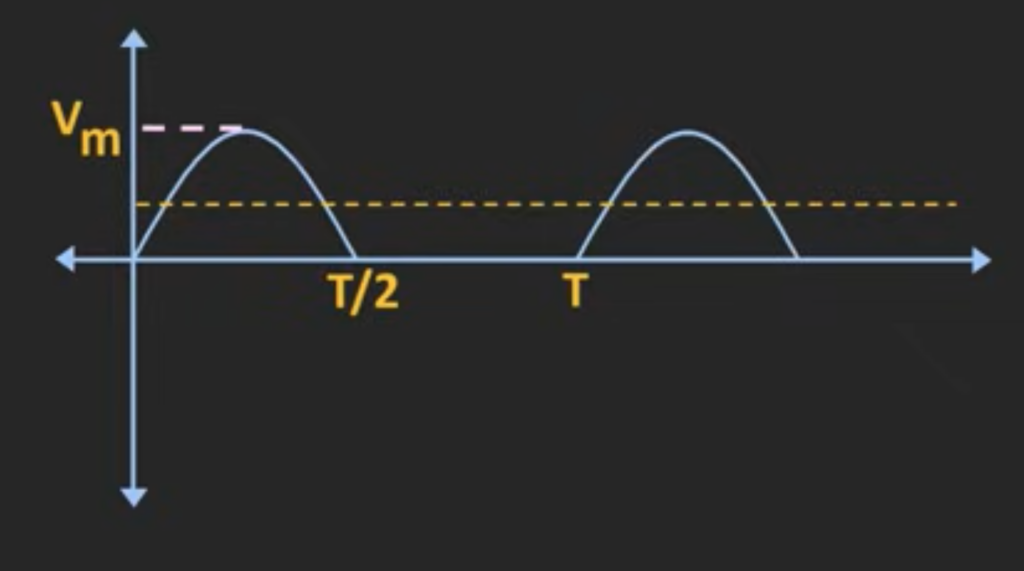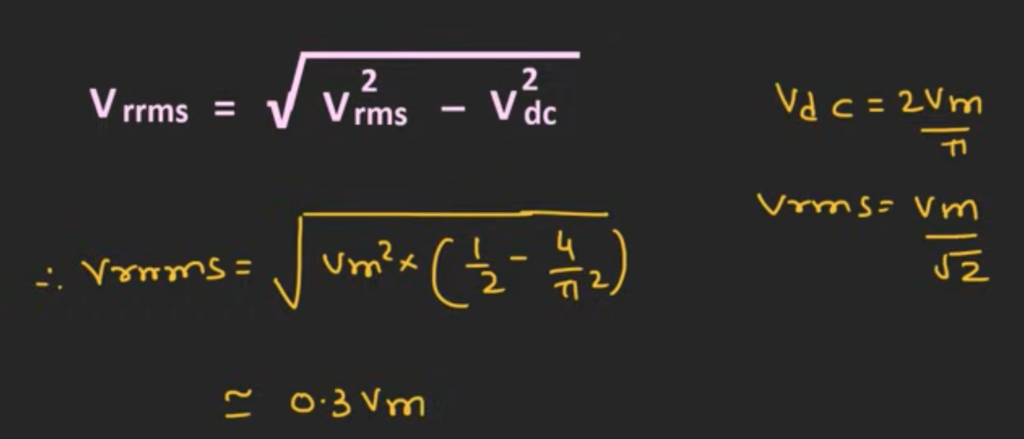Ripple Factor For Half Wave Rectifier
As we know, this is the waveform of the output voltage of the half wave rectifier circuit. It is a pulsating DC voltage with some finite AC variation called ripple on top of it.

For any rectifier, this ripple factor should be as small as possible, as the smaller the ripple factor is, the more effective this rectifier circuit would be. The ripple factor is calculated from the equation below where Vrrms is the root mean square of the ripple voltage and the Vdc is the average DC voltage.

The RMS value of the waveform can be expressed by the first expression. We can rearrange the equation to find the RMS value of the ripple to be the second expression. Since we already know the Vdc of the half wave rectifier which is the input voltage divided by π and the RMS value for the half wave rectifier is input. voltage divided by two.

By substituting the values in to the equation and simplifiing it, we gets that the RMS value for the ripple voltage for the half wave rectifier i s about 0.386 times the input voltage.

Finally, we can use this calculated RMS for the ripple voltage to calculate the ripple factor which is about 1.21.

Ripple Factor For Full Wave Rectifier
The steps for finding the ripple factor for full wave rectifier is the same as the way we used for the half wave rectifier. We need to find the RMS of the ripple voltage first using the following expression. By substituting the values into the equation we can easily find out that the value is approximately equal to 0.3 times the input voltage.

After we find the RMS voltage of the ripple, we can use it to calculate the ripple factor. This value of ripple factor is about 0.483 for the full wave rectifier.
